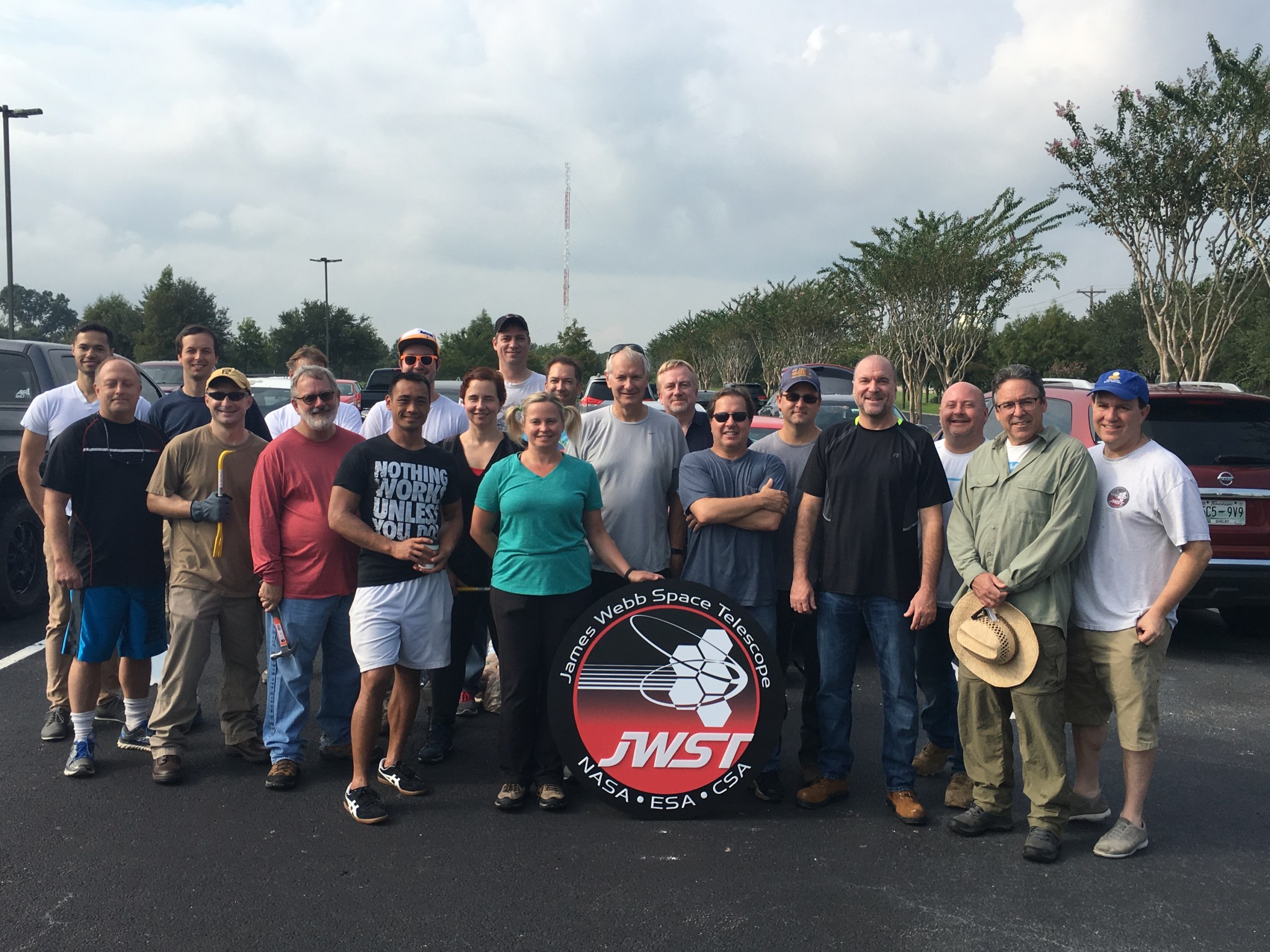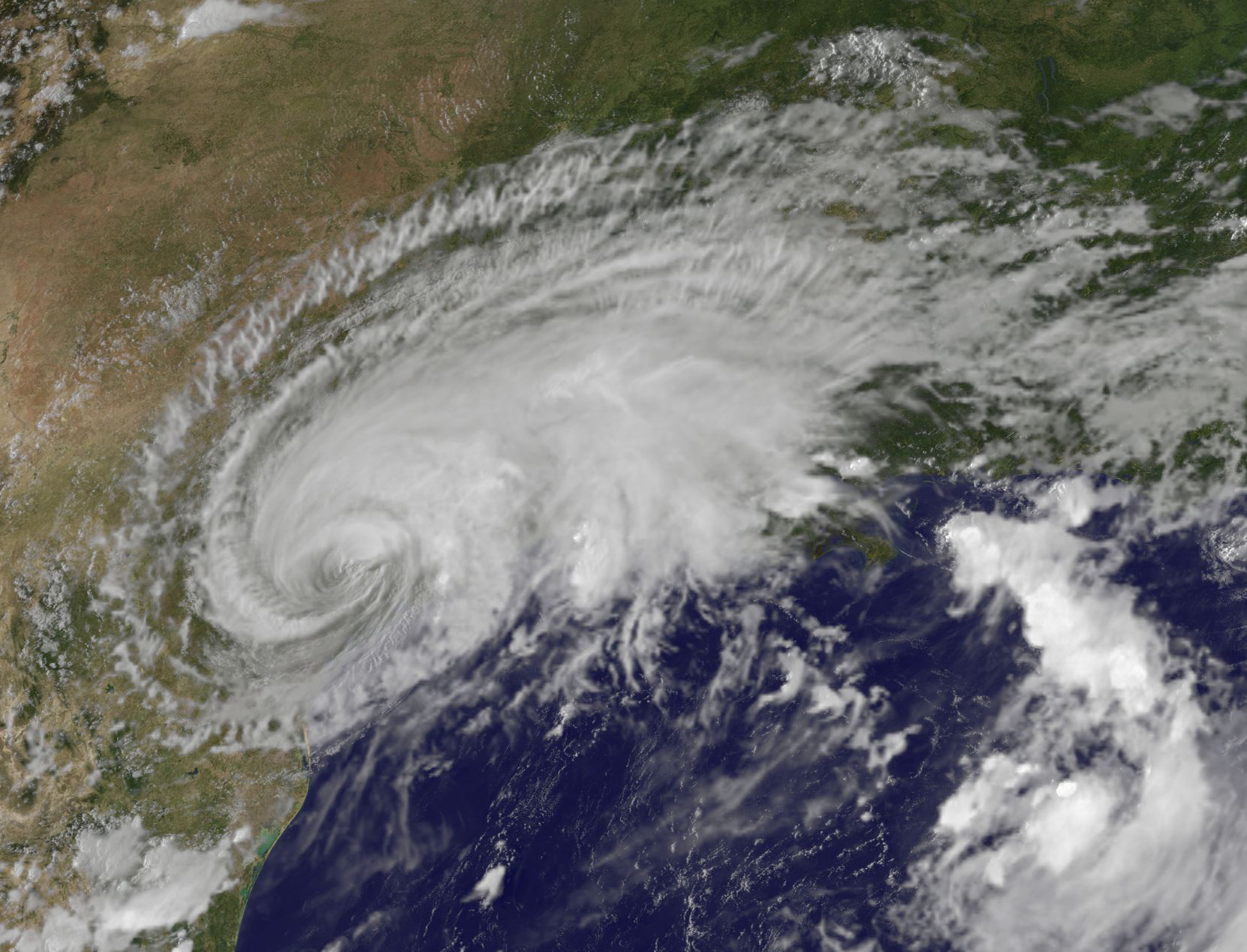Several members of the James Webb Space Telescope team stationed at NASA’s Johnson Space Center in Houston volunteered over the Labor Day weekend to help clean up and repair damage to the city caused by Hurricane Harvey.

Twenty Webb telescope team members volunteered time Sept. 2 through Sept. 4 to assist with local clean-up and repair efforts in Houston, which recently saw historic flooding caused by the hurricane. Harvey slammed into the coast of Texas on Aug. 25, beginning as a category 4 hurricane and later stalling over eastern Texas as a tropical storm, where it dropped as much as 50 inches of rain in and around the city. As the flood waters receded, they left waterlogged homes in their wake.
Offering a helping hand
Dave Hickey, an instrument operations and engineering branch manager for James Webb Space Telescope at the Space Telescope Science Institute in Baltimore, and also a volunteer firefighter, was one of the Webb team members who spent their holiday helping Houston residents as part of a volunteer effort organized by The Harbor, an area church located about 10 miles from Johnson with a list of about 100 homes in the area that needed assistance.
Hickey explained that two crews from the Webb team went to assist two families of Johnson Space Center employees, while the rest of the team divided themselves among other volunteer teams from the church.
“The devastation was readily apparent as you turned into a neighborhood and saw the contents of house after house emptied onto the curb,” said Hickey. “Groups helped with a wide range of work, including removing destroyed furnishings, removing drywall and insulation, pulling up flooring and cabinets, bleaching the wood framing after drywall was removed, and helping fill out FEMA [Federal Emergency Management Agency] paperwork.”
Not all of the homes in the area sustained the same amount of damage from the flood waters, but the Bayou City, which is veined with channels and pockmarked with ponds and lakes, saw waters rise as high as 20 feet over the tops of some waterways.
“One house had a foot of water, while the ones across the street had nothing, but those at the entrance of the community had five feet of water,” explained Hickey. “Another family told of water that started to rise in the middle of the night and a boat that dodged submerged cars to rescue them and their wheelchair-bound child from an upper window.”
In addition to the physical clean-up efforts, some Webb team members also helped victims of the hurricane with paperwork critical to their financial recovery from the storm. Lee Feinberg, the optical telescope element manager for the Webb telescope at NASA’s Goddard Space Flight Center in Greenbelt, Maryland, assisted an employee of the hotel at which some of the Webb team were staying with paperwork required for FEMA assistance.
“She was a single mother with three dependents, whose house was severely impacted, and English is her second language,” explained Feinberg.
The Webb volunteer team took all of the proper precautions, including wearing safety gear and staying properly hydrated, to ensure their well-being as they worked within areas devastated by the hurricane. In addition to the initial group pictured in the photo, other Webb team members have volunteered and continue to volunteer their time as clean-up efforts continue around the city.
“It all came down to people helping each other in their hour of need, and recognizing how fragile we are and that the roles could be reversed quickly and unexpectedly at any given time,” Dave Hickey said.
A personal loss for a Webb team member
Such a role reversal happened for Stefanie Milam, James Webb Space Telescope’s deputy project scientist for planetary science at Goddard, who grew up in Houston and whose parents nearly lost their house (the same house where they raised Milam) to Hurricane Harvey. Their house was inundated with five feet of floodwater, and damage caused by a tree falling on the roof allowed rainwater to enter though the attic.
Milam sent out a call for aid via Facebook and received a tremendous response. “Friends from all stages of my life, from elementary school through colleagues now, showed up to help them,” said Milam. “Some brought water and food for everyone, and others just sacrificed hard labor.”
Upon hearing about the Webb team’s volunteer efforts around Houston, Milam said she was nearly brought to tears from the joy she felt.
“The community down there is strong, and everyone seems to be helping everyone. No one looks the other way,” said Milam. “I’m proud that I am associated with wonderful people helping those in need.”
Sheltering Webb during the storm
Each Webb team volunteer spent between two to six hours of their time helping out, depending on when they were needed for the ongoing cryogenic testing of the telescope at Johnson Space Center. Dave Hickey said because the primary responsibility of each team member was to support Webb’s testing, he encouraged the volunteers to be careful and to pace themselves while assisting Houston residents. He also suggested each volunteer rested thoroughly before reporting for their next shift at the center.
Because of the perseverance of the team, Webb’s cryogenic testing continued without an impact on its schedule. Johnson never lost power during the storm, so all of the test and support systems for the telescope remained functional. Even before Webb began its cryogenic testing, Johnson had a hurricane contingency plan in place, which those at the center followed and adapted to the current weather as needed.
Some team members decided to ride out the storm at Johnson with Webb, sleeping on air mattresses the center provided. Those who needed to leave checked out of and back into work, so team leaders could track them to ensure their safety. For anyone who needed a ride to or from Johnson, the team secured large sport utility vehicles and trucks to traverse the slick and potentially flooded roads, as the weather permitted.
The James Webb Space Telescope is the scientific complement to NASA’s Hubble Space Telescope. It will be the most powerful space telescope ever built. Webb is an international project led by NASA with its partners, ESA (European Space Agency) and the CSA (Canadian Space Agency).
For more information about the hurricanes and tropical storms tracked by NASA, visit: https://www.nasa.gov/hurricanes
For more information about the Webb telescope, visit: www.jwst.nasa.gov or www.nasa.gov/webb
By Eric Villard
NASA’s Goddard Space Flight Center
























